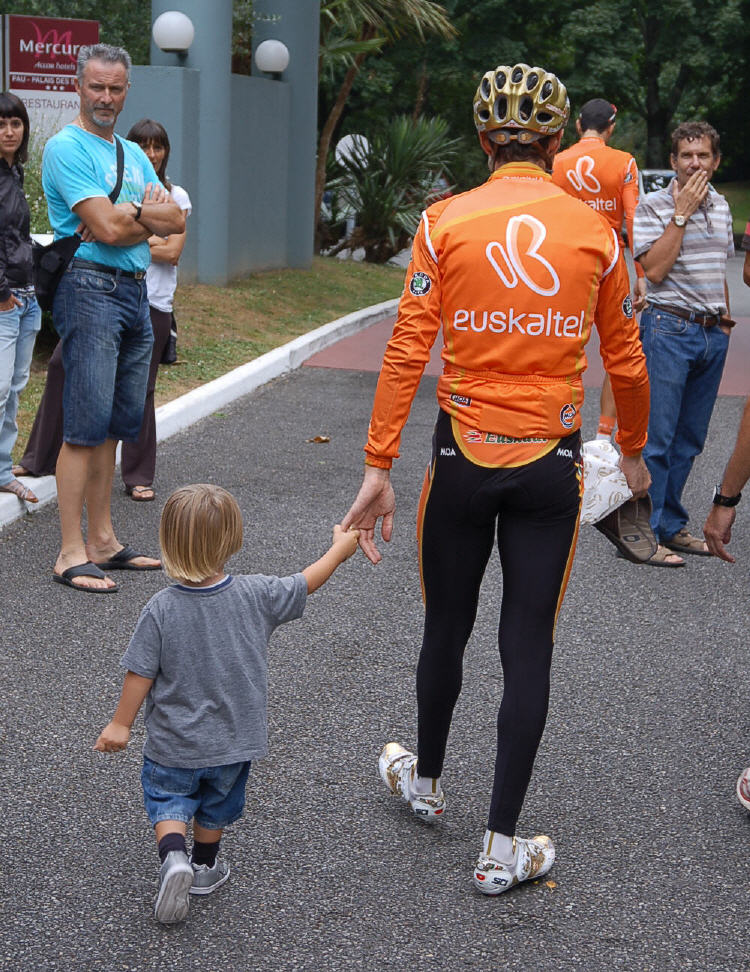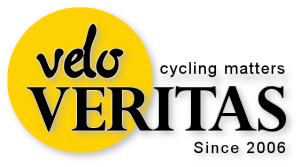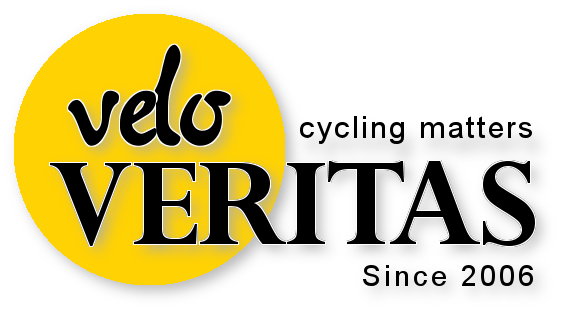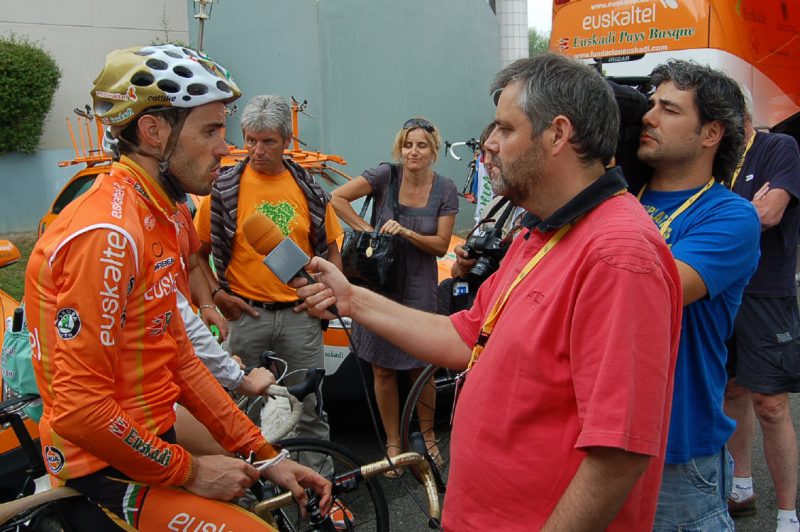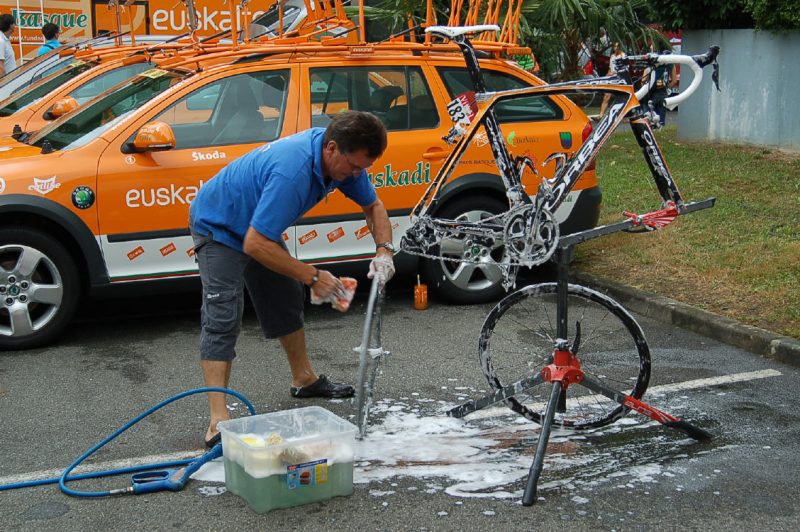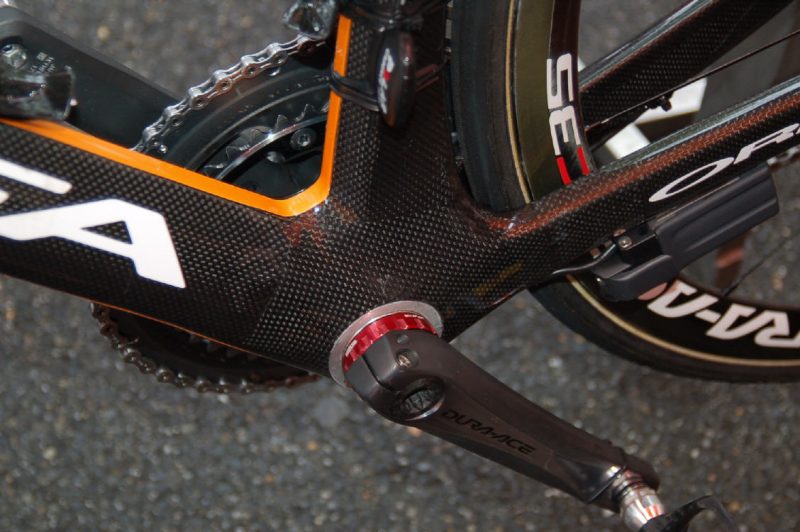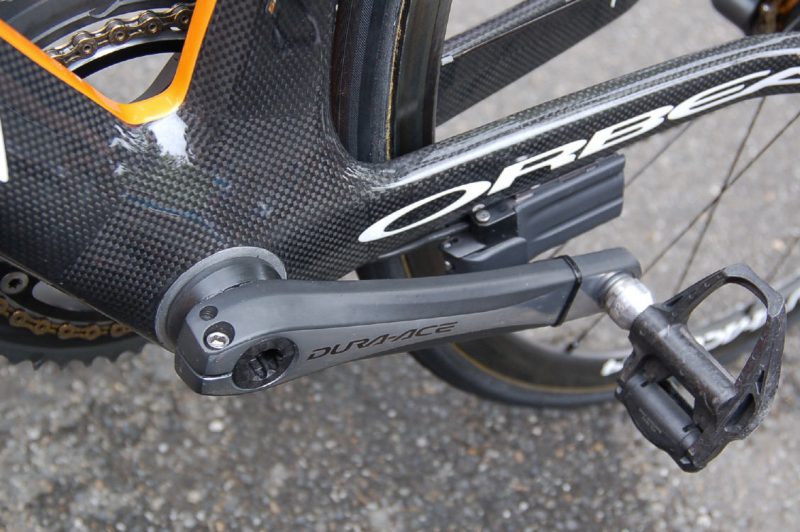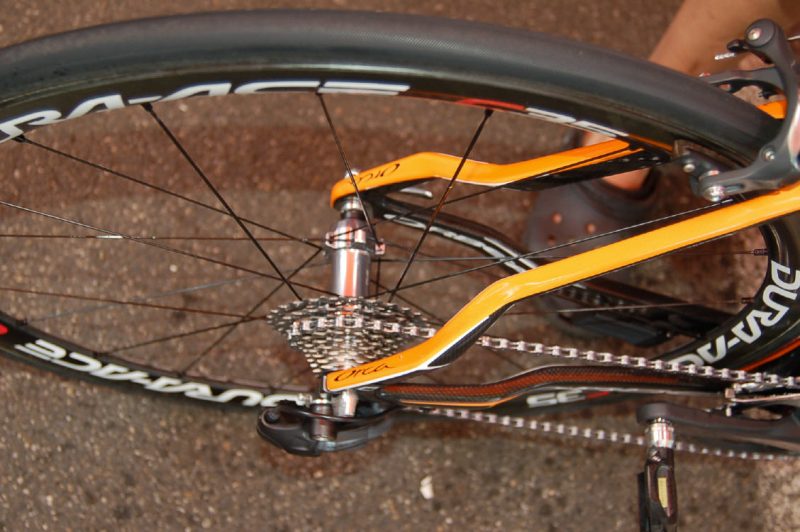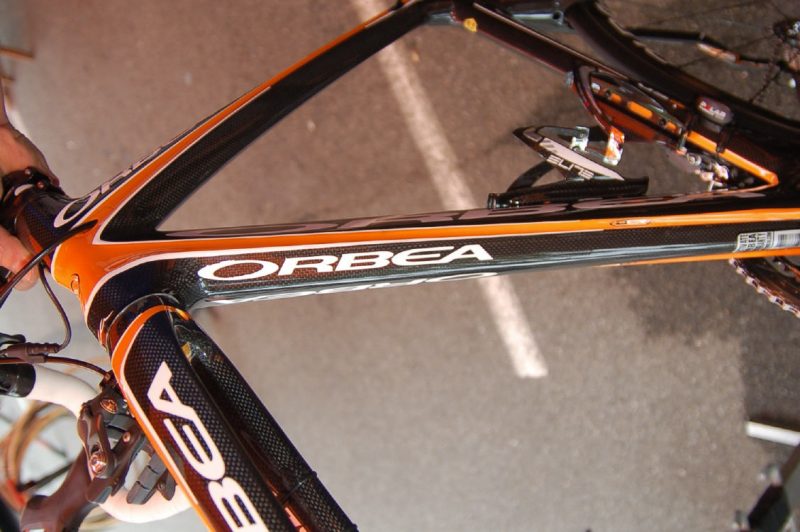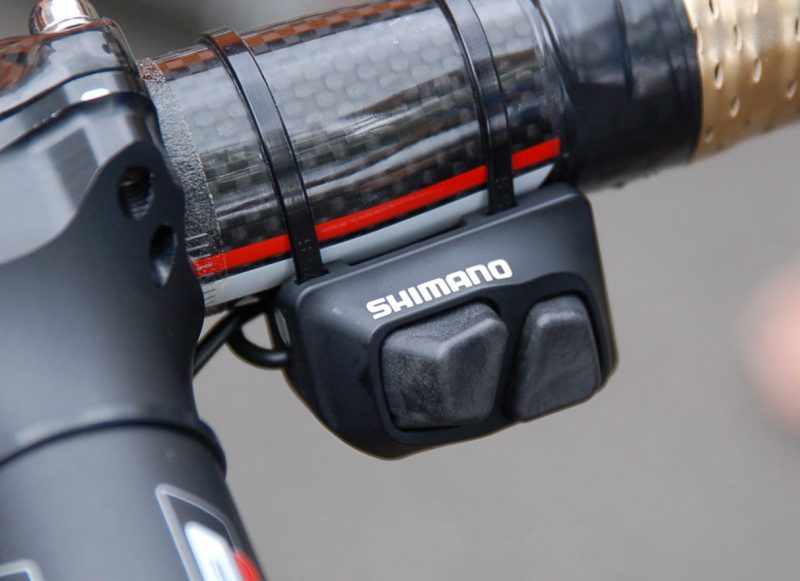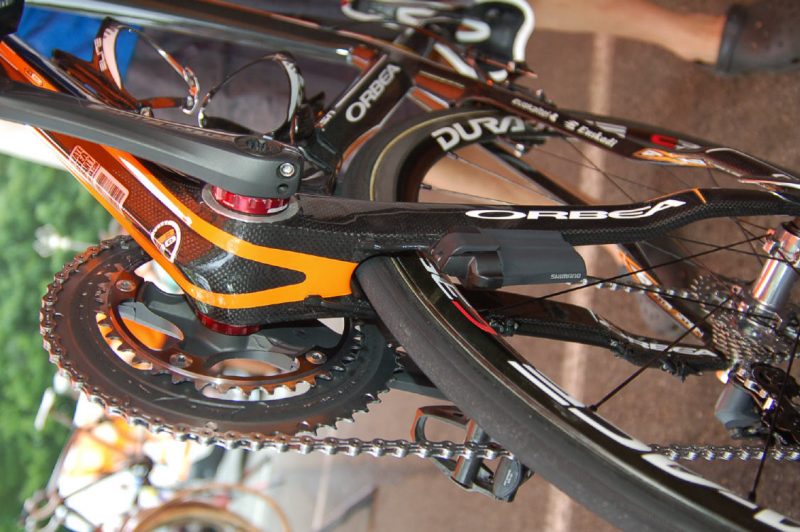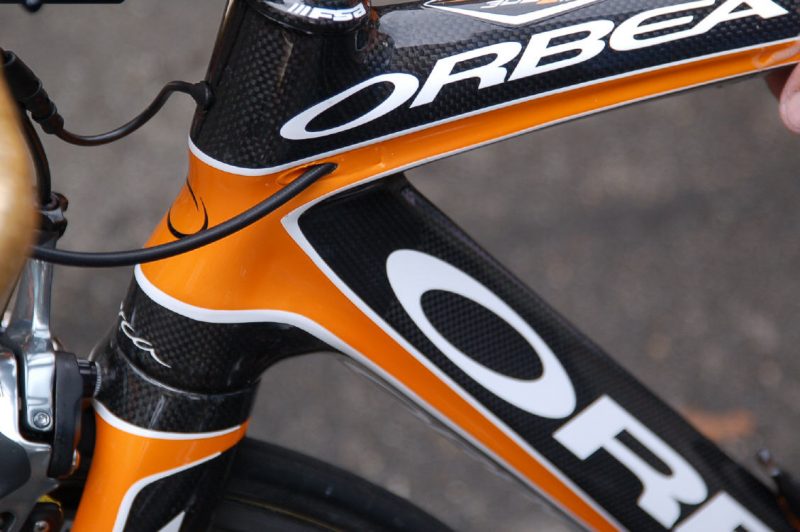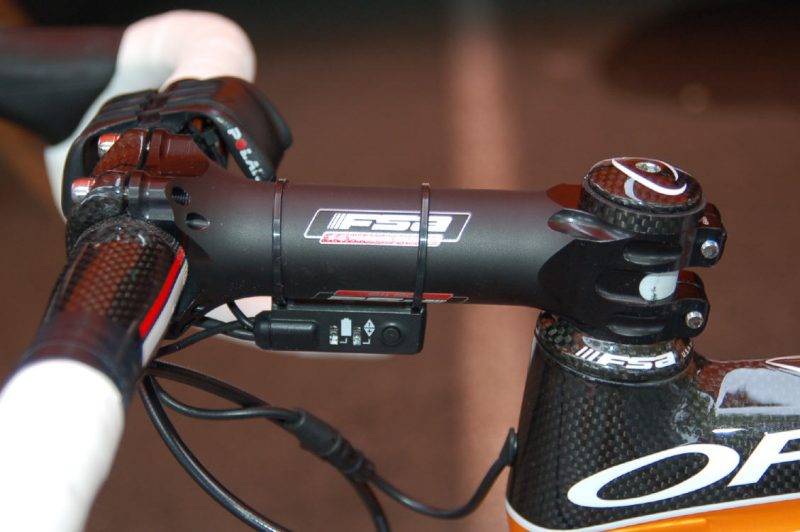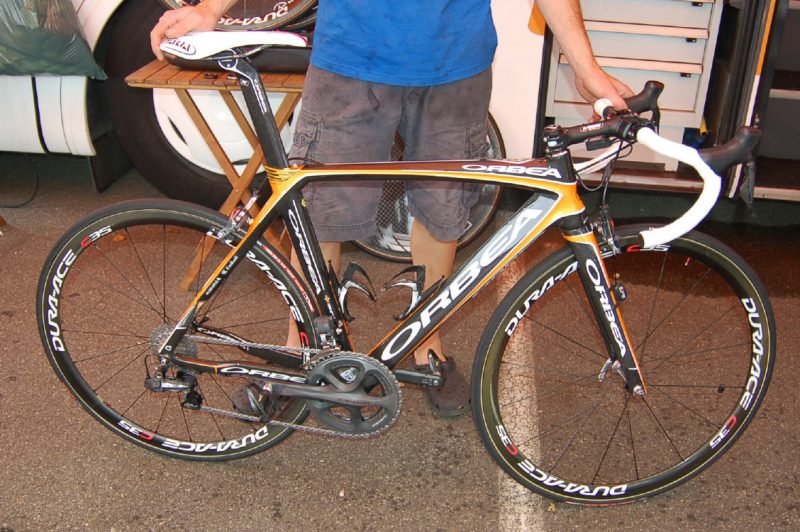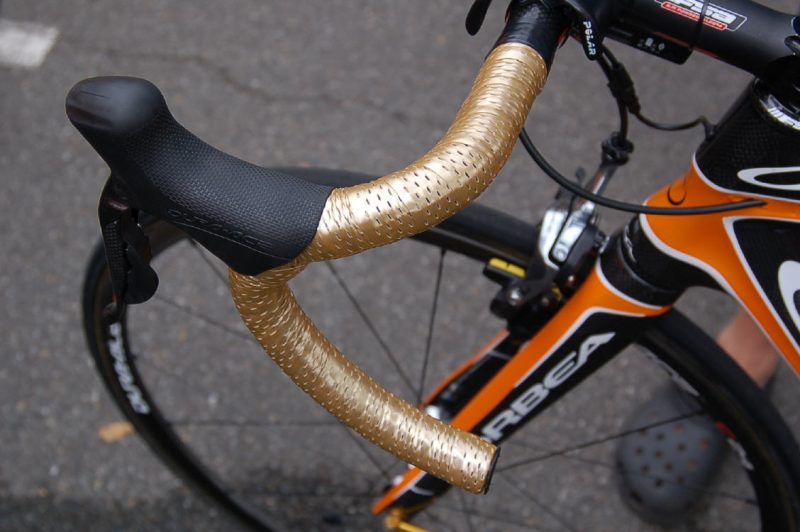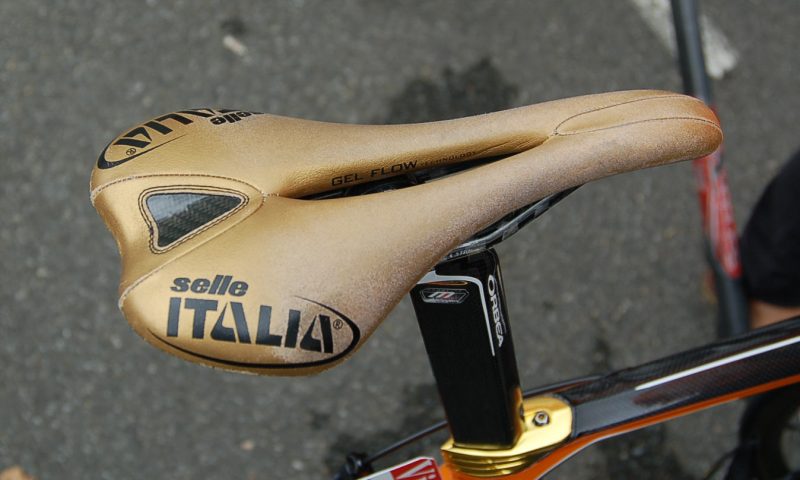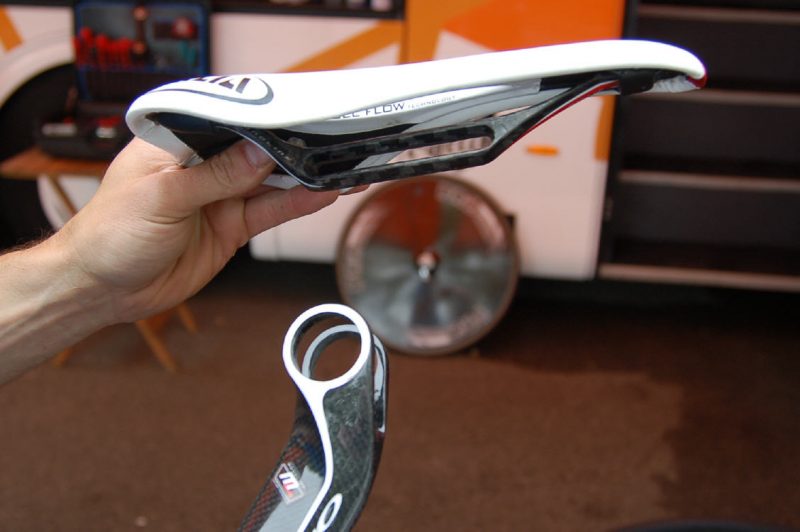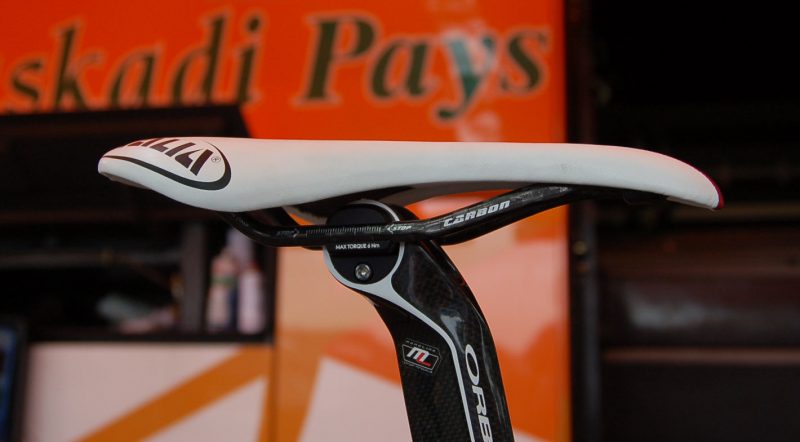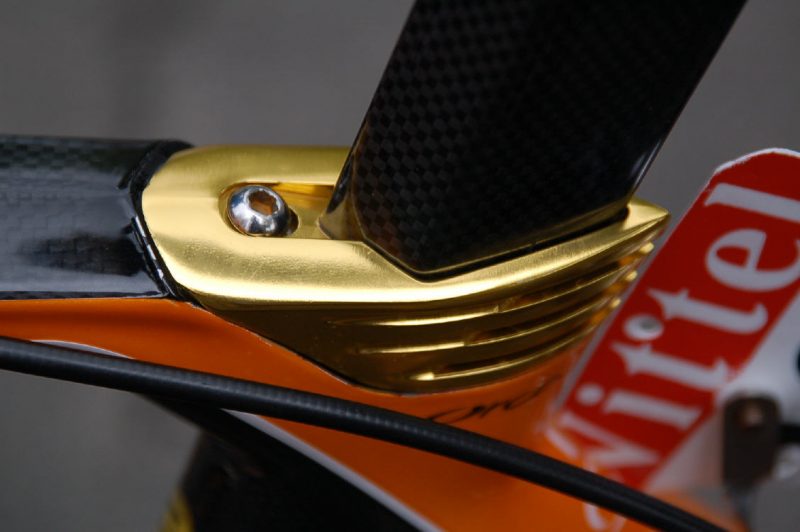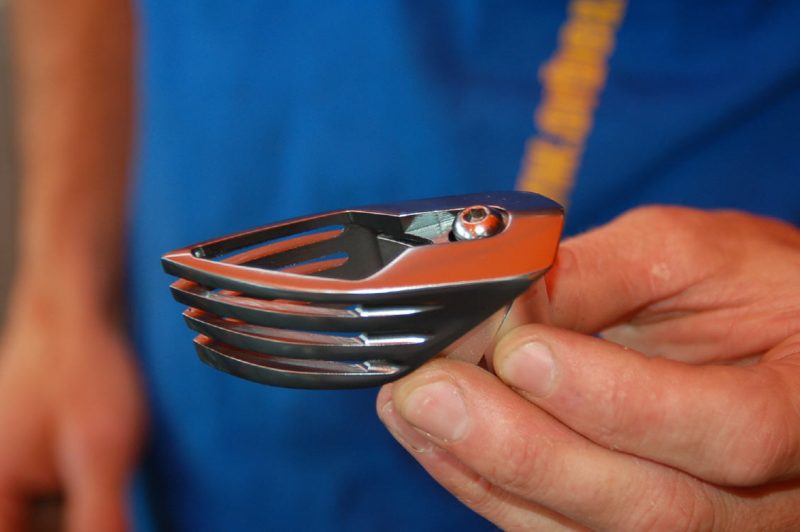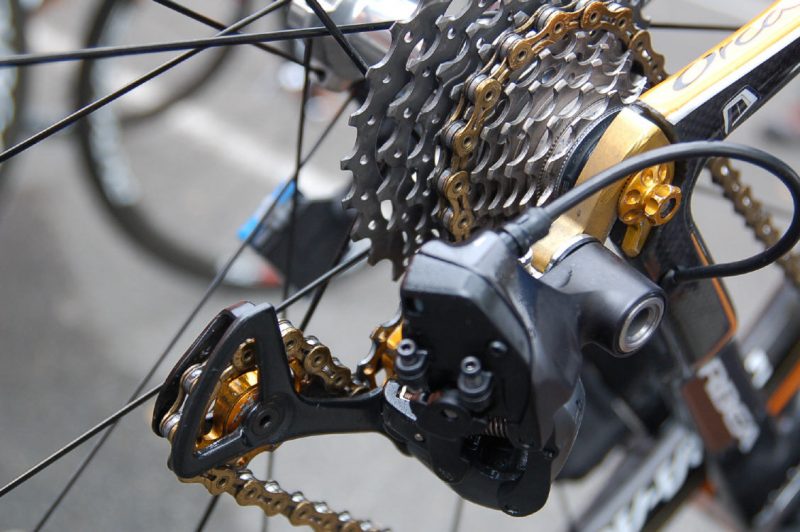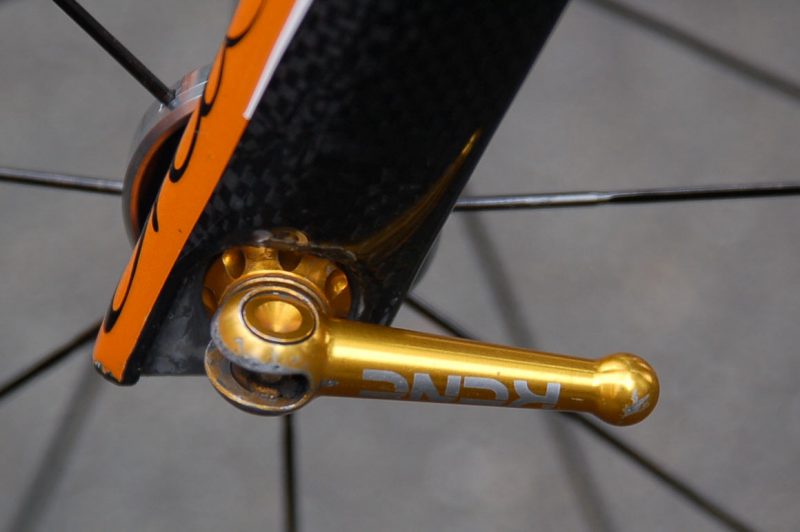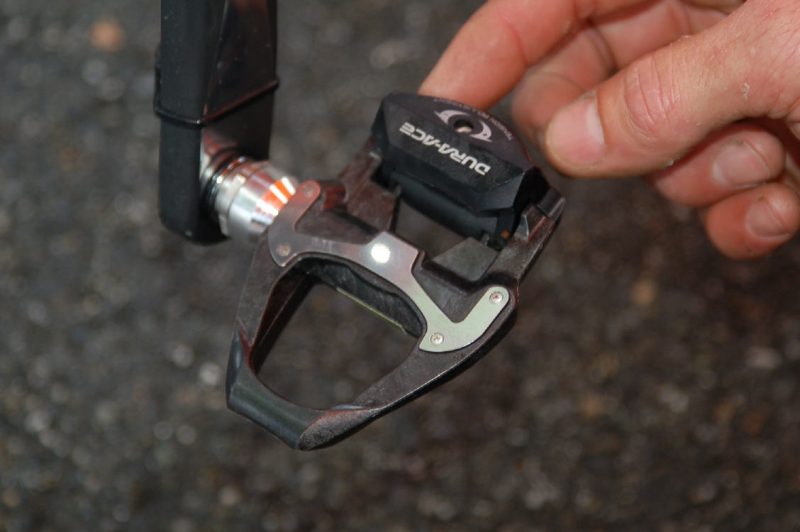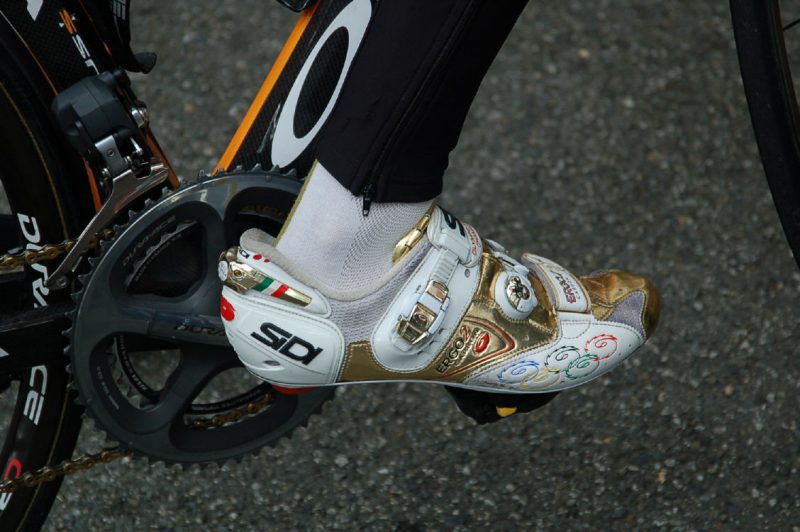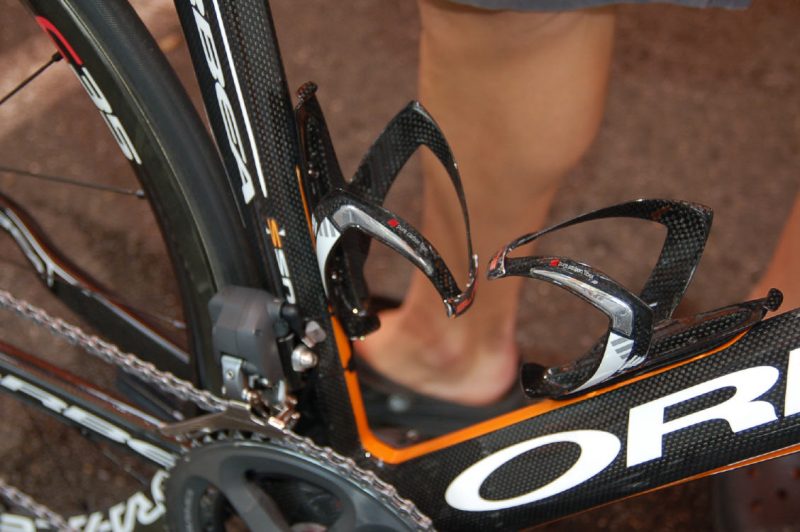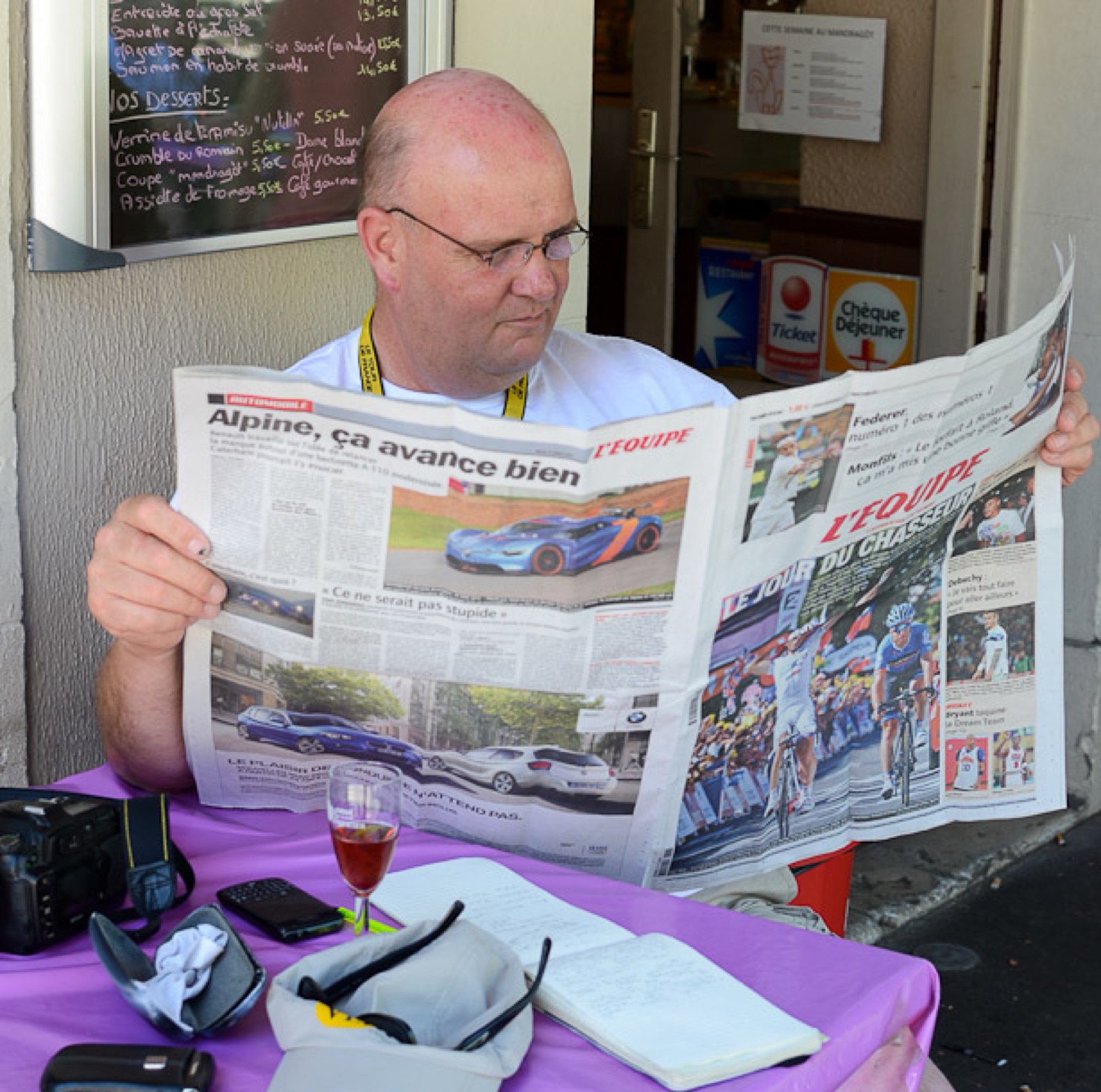When you talk about Orbea bicycles and the Euskaltel team, it’s about more than light alloy and carbon; it’s about people, national identity, unity and pride. We look at Samuel Sanchez’s Orbea Orca now. On the Tour, many of the teams will have the team vehicles parked ‘wagon train’ style or have ‘crime scene’ tapes to keep the civilians at bay. Not at Euskaltel.
Riders, mechanics, kids, old folks, journos, camera crews and anyone else who’s in the neighbourhood mill around in happy confusion — but the job still gets done.
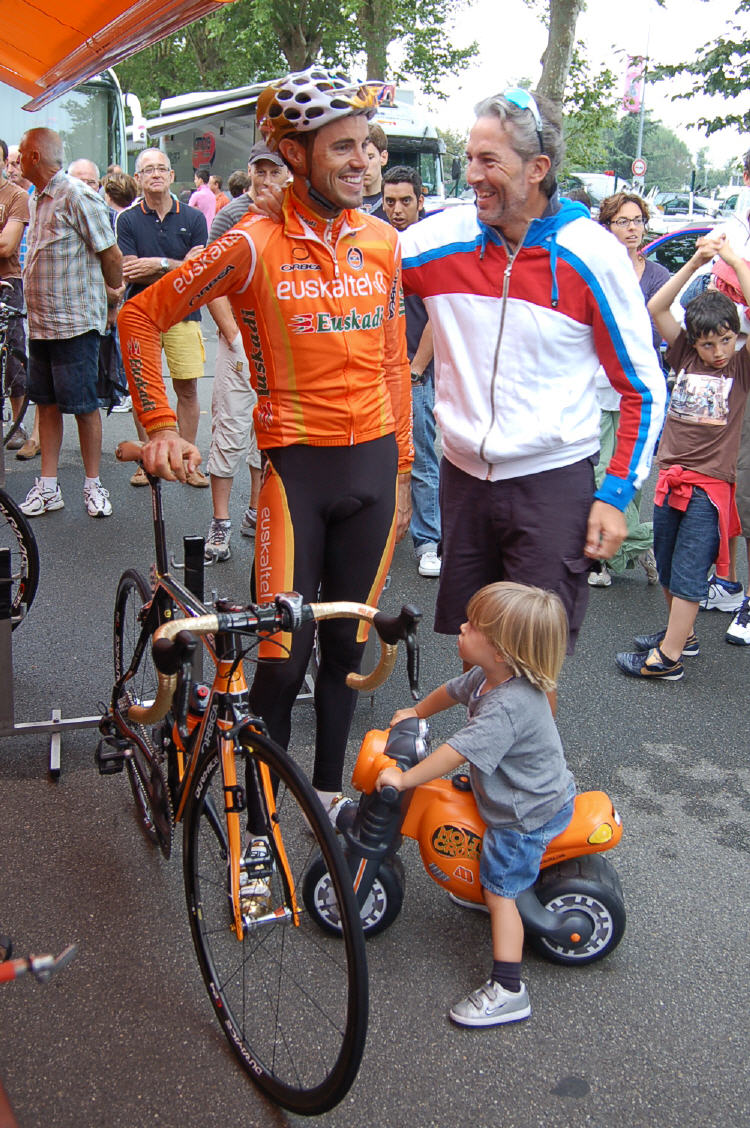
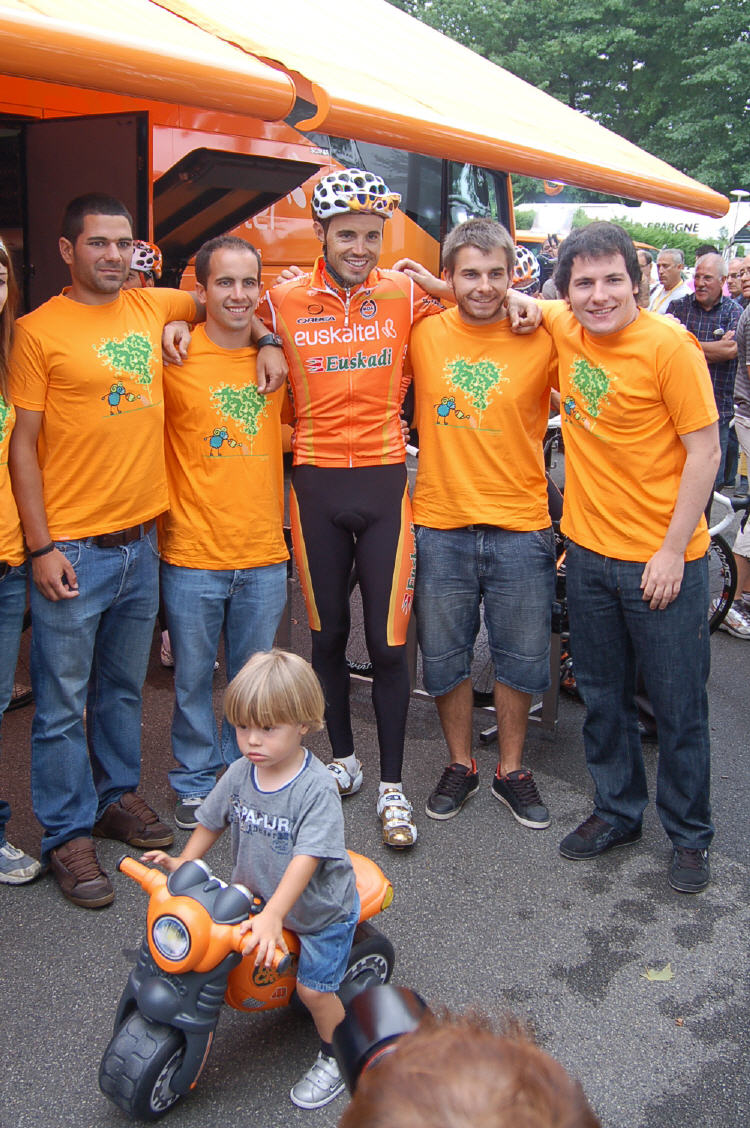
In the midst of it all, rims get cleaned off ready to accept cement, rims are cemented, tubs are stuck on and Orcas get washed.
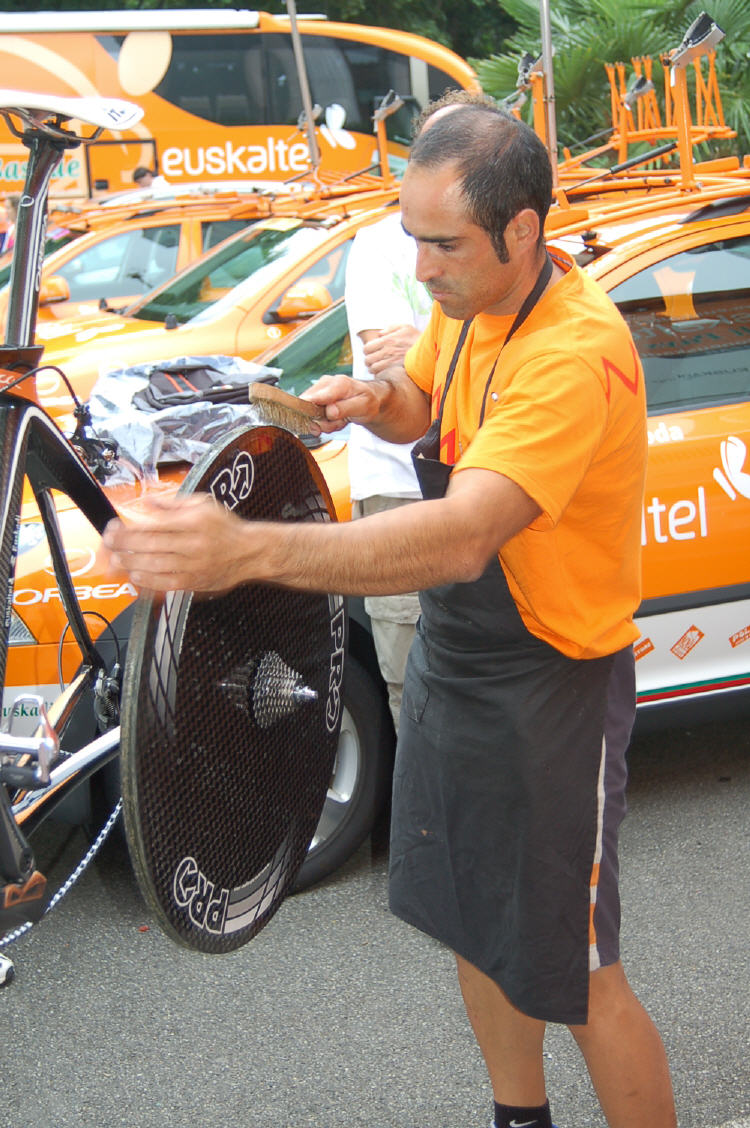
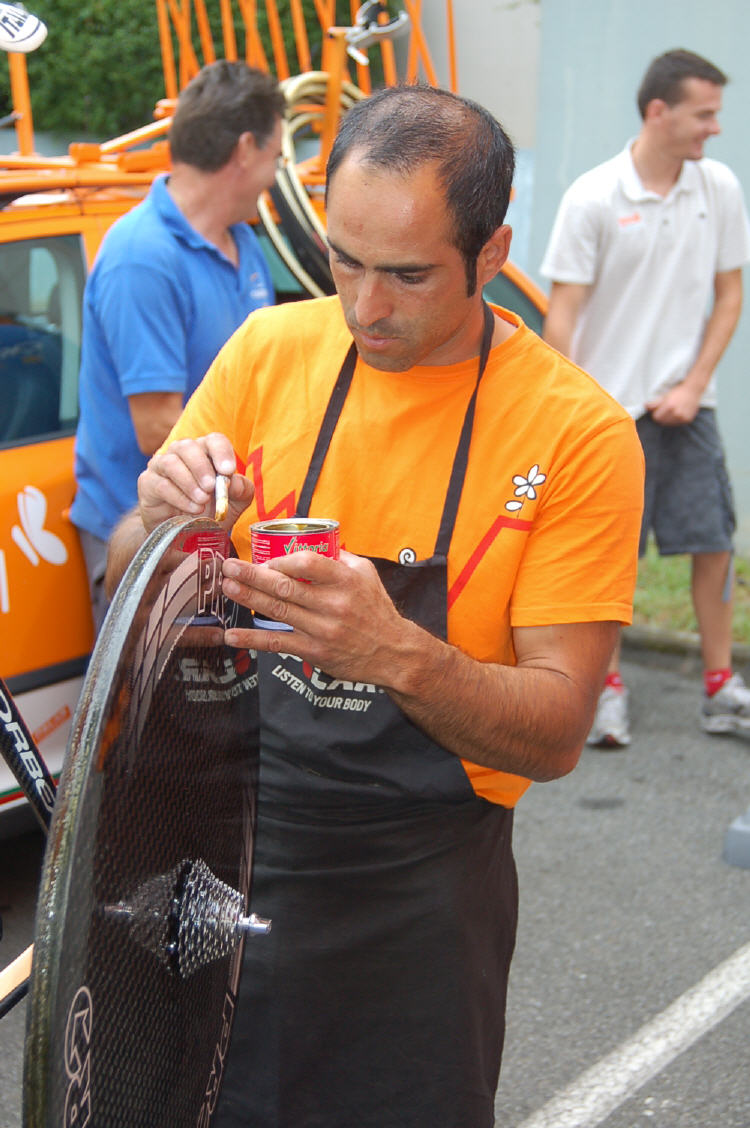
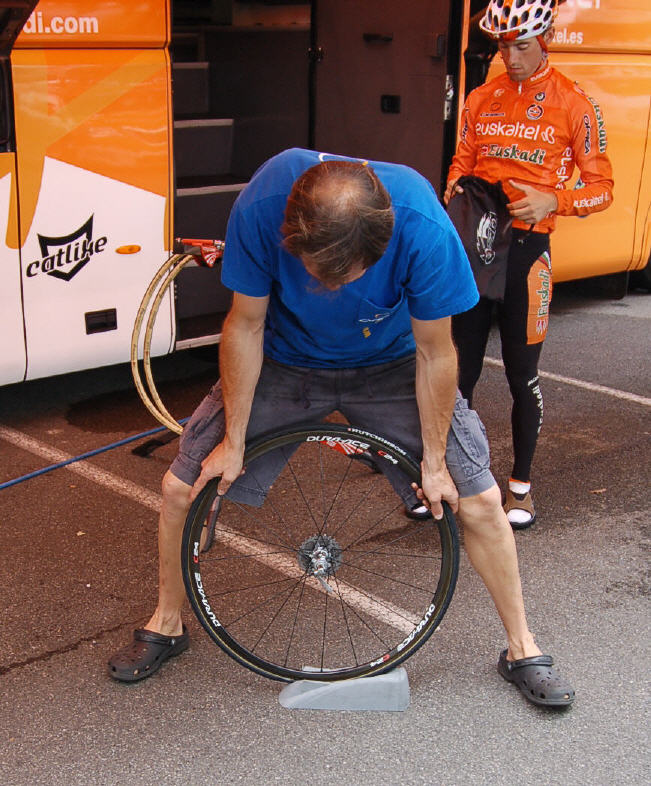
‘Vamoose!’ The cry goes up and the boys are off on their rest day leg loosener, lead by Olympic champion, Samuel Sanchez.
We’re here to have a look at Samuel’s gold high-lighted ‘special’ but since he’s just pedalled off on the beast; that will be difficult.
It’s no problem, head mechanic Tomas tells us they won’t be long and gets us up to speed on the basics, using Sammy’s ‘B’ bike which has an identical position and apart from the gold high-lights, BB30 bottom bracket and ceramic replacement bearings, is the same machine.
As regards the bracket, it will take BB30 or standard brackets with the addition of an alloy sleeve — and don’t worry about weight, it’s down nudging the UCI minimum.
Pros must have identical positions on their machines, if the ‘A’ bike is damaged in a crash and the rider has to change to the ‘B’ bike, delicate knees will pick up any change in position, however slight, and a whole season could be compromised.
This year’s Orca has had a virtual complete re-design, including a new sleeker head detail with super neat cable entry and over-sized 1.5” lower race; new front fork; fluted down tube, reworked seat tube and radical new aero seat stays.
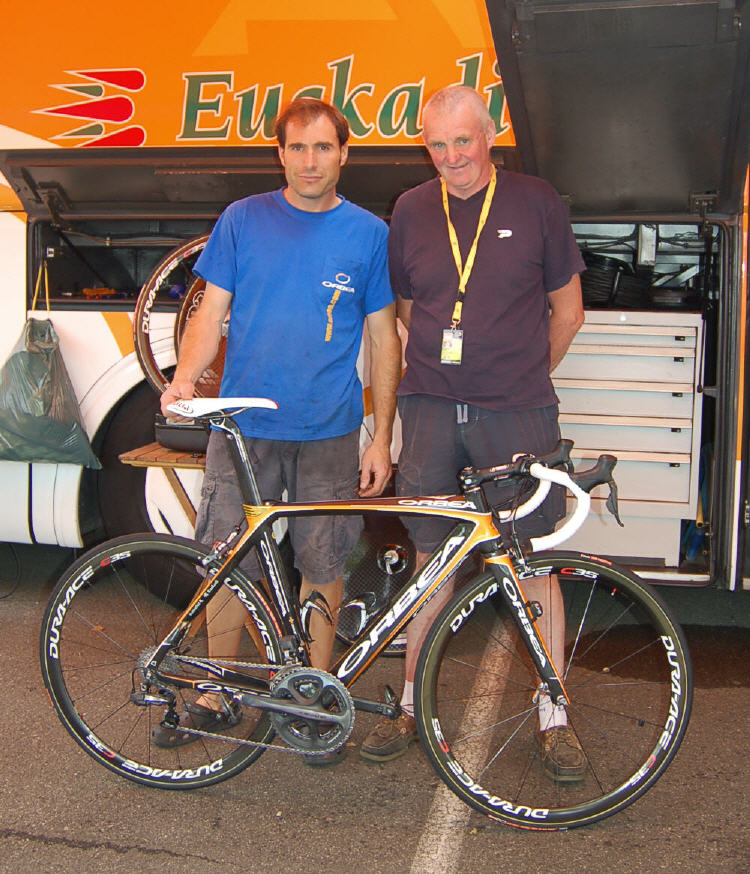
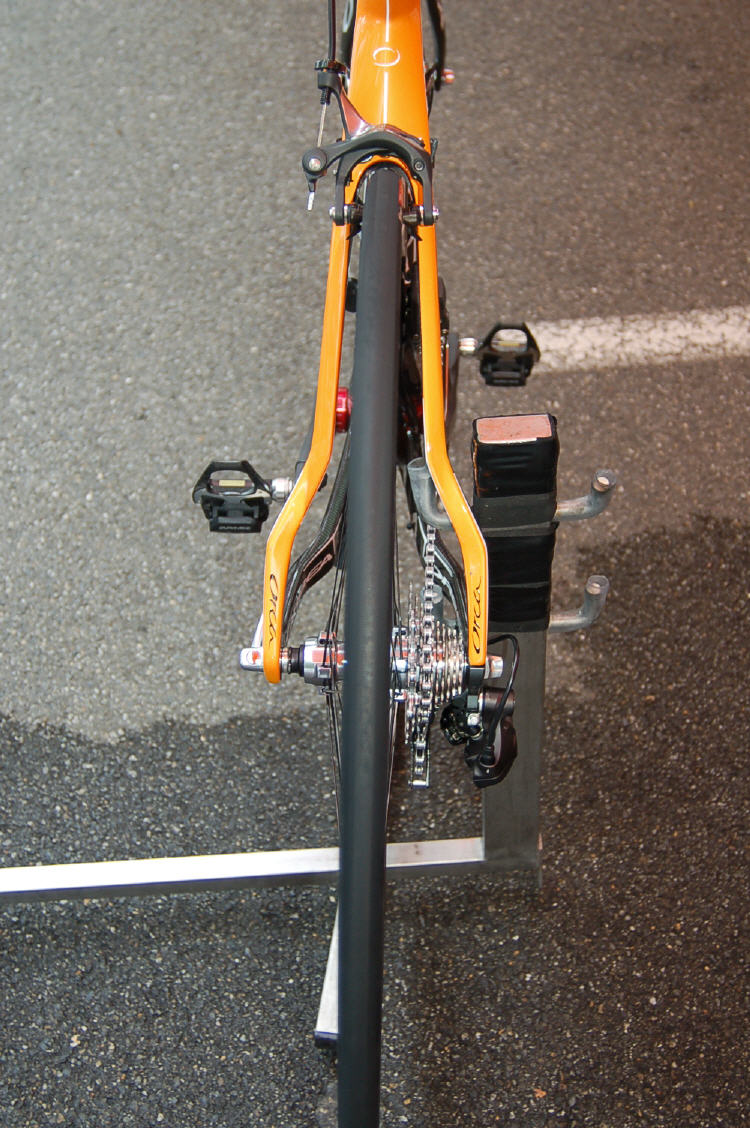
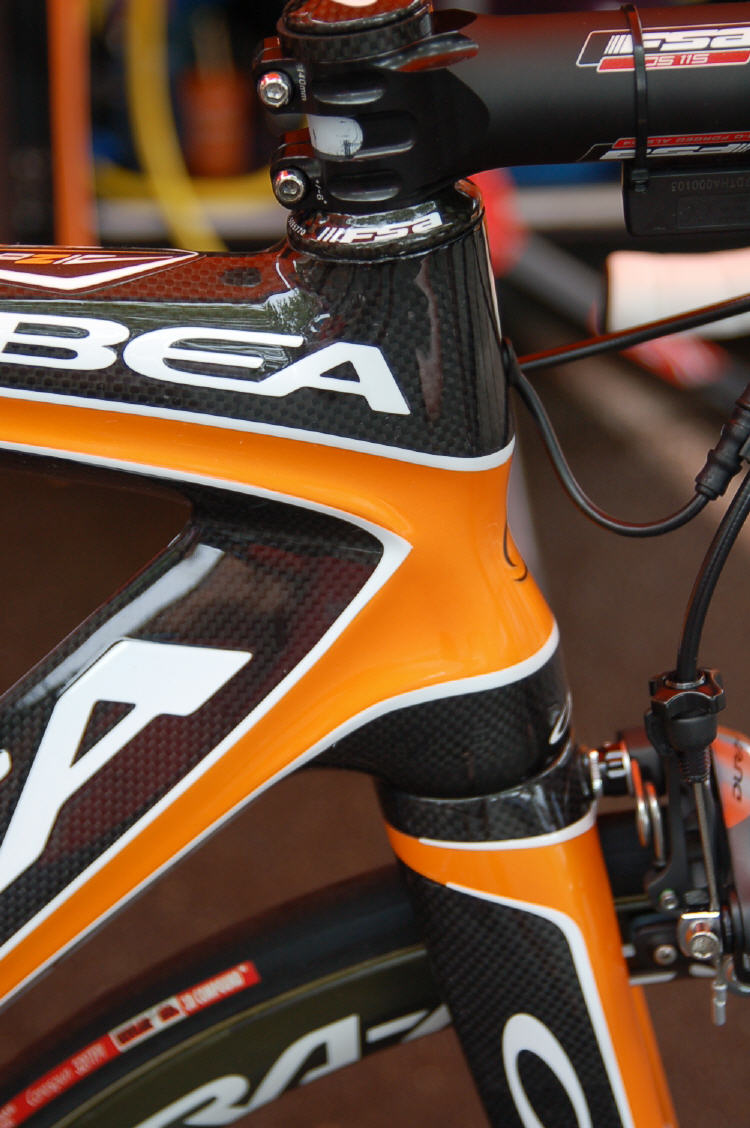
‘Attraction’ is the name that Orbea have given this new concept of tube design, claiming that it minimises road vibration but leads to a more efficient laying down of power through the pedals.
The range of sizes has also increased, last year the frames were available in 48, 51, 54, 57 and 60 — for 2010 the 54 has been discontinued and 53 and 55 are available.
At this stage it’s time to throw in the second buzz word — SSN, ‘size specific nerve,’ a concept, where, due to the fibre lay-up, an Orca will give the same sensations to its rider whether it’s a 48 or a 60 cm frame.
The group set is by Shimano and incorporates electronic shifting.
We asked Tomas if there were any ‘tricks of the trade’ necessary or quirks to deal with, ‘no, obviously we had to get used to it but once you do, there’s no problem, the riders like it and one advantage that I’ve not heard mentioned is that because the brake levers don’t have to accommodate the gear actuation they are narrower and more comfortable.
Samuel uses shifter buttons on the top of the bars so as he can change gear without moving his hands to the levers.’
Battery mount is below the chain stays — neat.
Cable routing is very neat and rear brake operation smooth; bizarre though it may seem at this level, when you give the rear brake lever of some of the big team’s bikes the ‘squeeze test’ the feel is spongy and the return slow and imprecise — not on the Orbea.
That’s thanks to ‘DCR’ direct cable routing coupled with GORE RideOn cables.
Back to the subject of hands, Samuel uses FSA bars and stem, with a deeper bend than is currently fashionable; bar width is 42″ carbon but because he requires a 14cm extension, this is in aluminium – carbon not being available above 13cm.
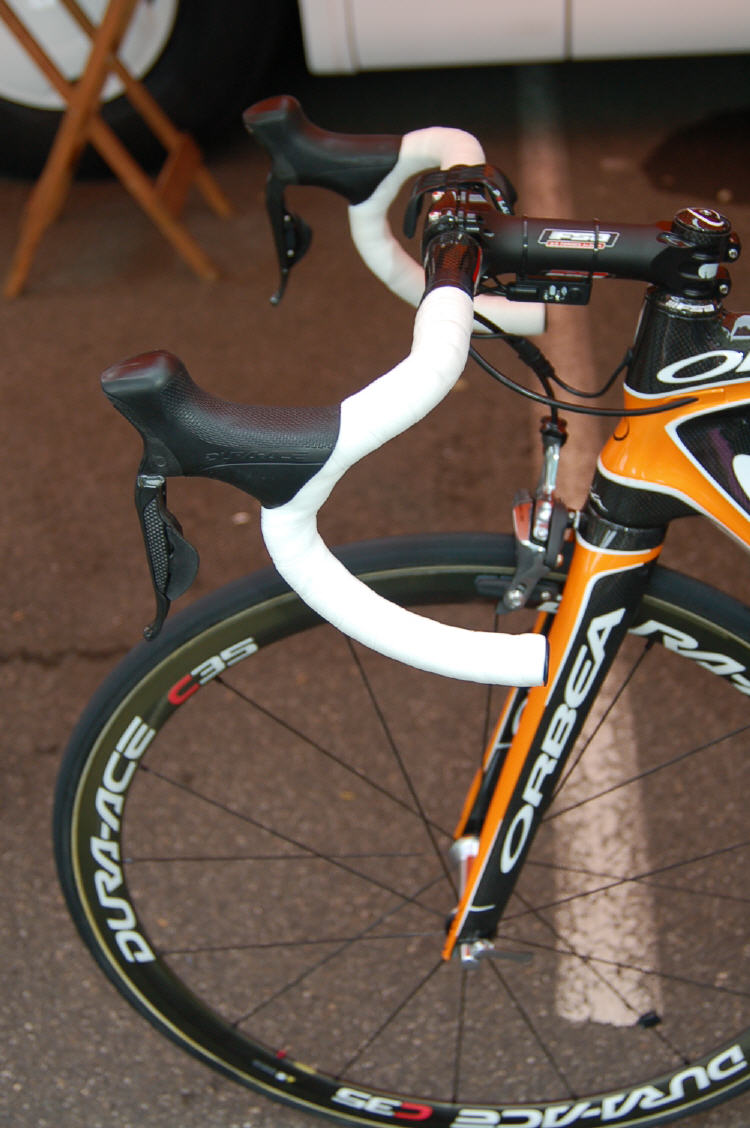
The gold taped deep bars accentuate what is already an aggressive position; ‘is he comfortable?’ is the obvious question for Tomas.
He explained that Samuel and team mate Igor Anton spent time in the wind tunnel in San Diego over the winter and their positions are aero, efficient and comfortable.
The Olympic champion sits on a gold Selle Italia ‘gel flow’ saddle, but with a twist, the saddle manufacturer has collaborated with the Basque company to design unique rails which together with the specially designed aero seat post gives an extremely neat solution, exclusive to Orbea.
On the ‘A’ bike the seat clamp is gold — naturally.
On the subject of aero, its buzzword time again, ‘AizonE’ is the name given to the aerodynamics package applied to the machine, taking it closer in spirit to a time trial bike with a claimed improvement in drag of 14%.
Perhaps the most striking feature is the cranked seat stay arrangement but the front fork blades — which have a carbon steerer – have been brought closer together and all gaps between the wheels and the frame tightened to improve ‘fluidity.’
The drive train is by Shimano 39/53 x 11 to 23 normally but we were visiting the day before the Tourmalet summit finish and a 28 was going on at the back [Dave and I pondered the question; ‘if Sammy needs a 28, what the hell would we need?’]
On the ‘A’ bike the gold chain is by KMC and the gold quick releases by KCNC are in titanium — and match the drop out, hanger, and jockey rollers.
We asked for Tomas’s take on oversize rollers and at Orbea they’re unconvinced — he doesn’t like the closeness off the gap between the sprockets and top roller in the smaller cogs and says that their research shows no advantage.
But Craig Geater, mechanic at The Shack reckons, ‘they save watts!’
Pedals are Dura Ace alloy and carbon and are stamped on by Samuel’s custom gold Sidis.
The Olympic theme continues on Samuel’s helmet, too.
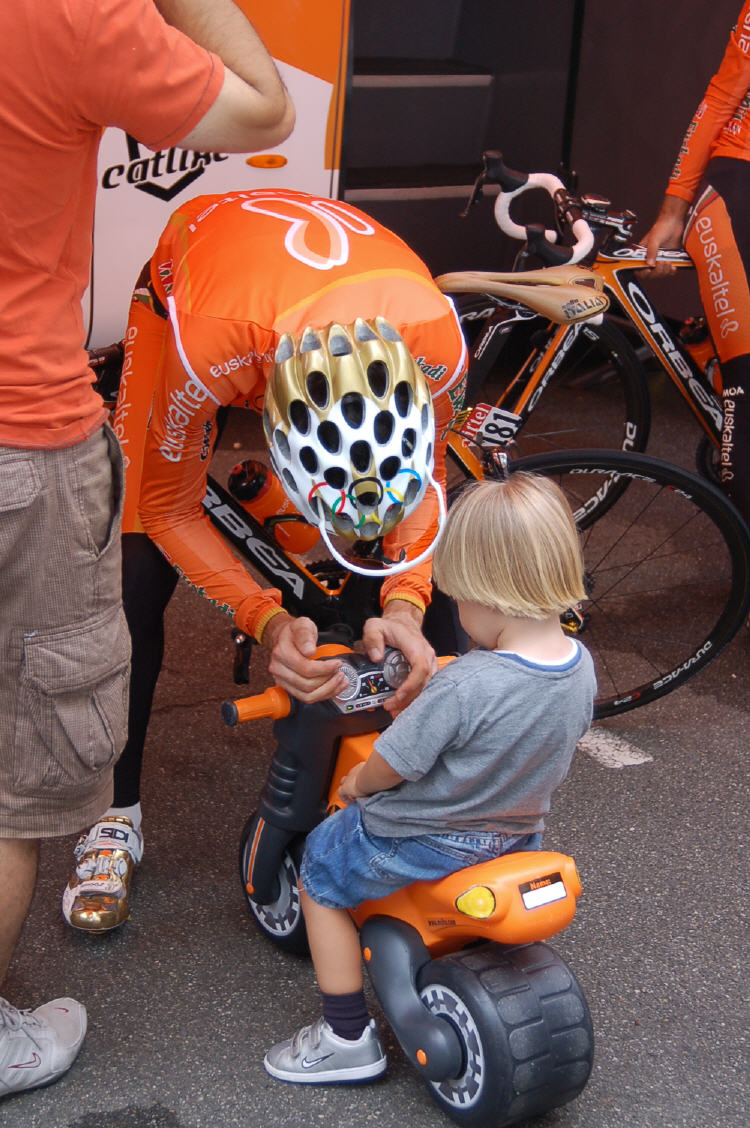
And it’s carbon that holds the bottles in place, courtesy of Elite.
Wheels are Dura Ace and rubber by Vittoria, Corsa EVO CX.
There were two more questions — Sammy wanted to know if he could use a different bike for the Tourmalet?
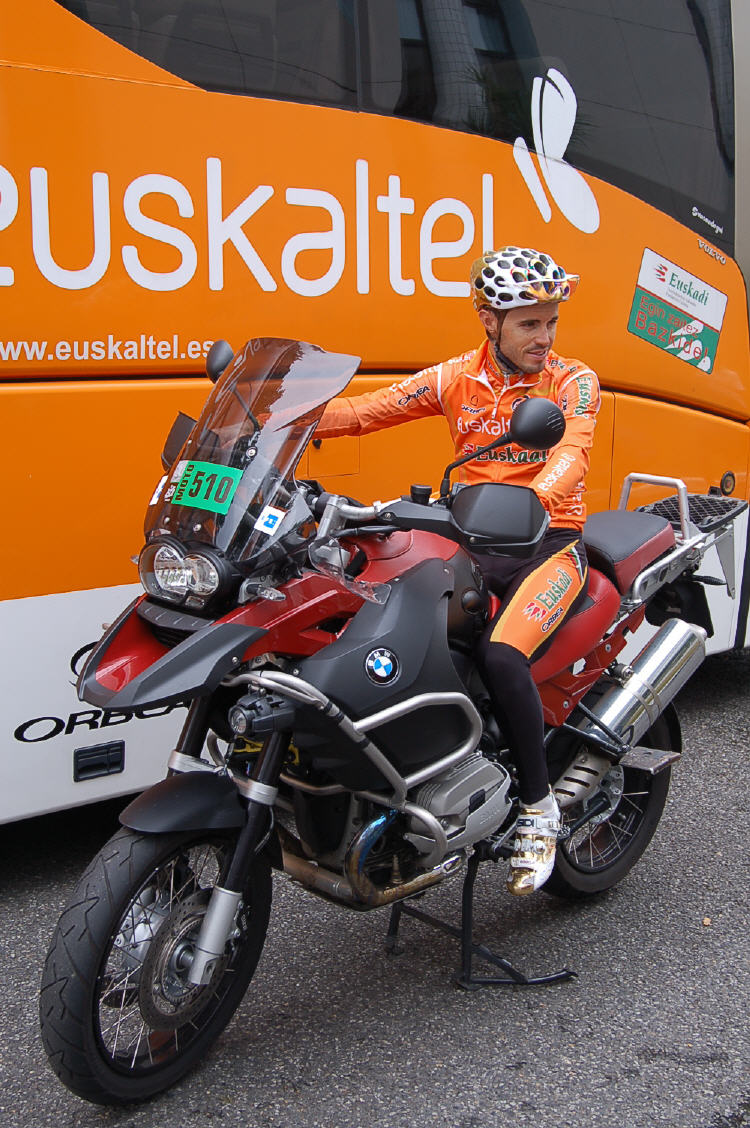
And secondly, when does my Orca to road test during my come back arrive?
With thanks to Tomas, Samuel and all at Euskaltel — but remember, he may be Olympic champion and mountain hard man to us, but he’s also just plain old ‘dad.’
